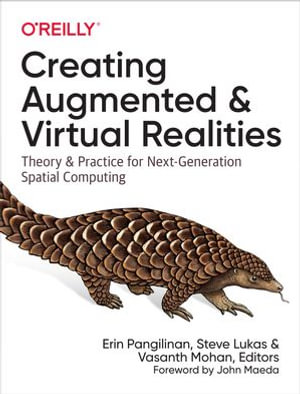
eTEXT
Creating Augmented and Virtual Realities
Theory and Practice for Next-Generation Spatial Computing
By: Erin Pangilinan, Steve Lukas, Vasanth Mohan
eText | 18 March 2019 | Edition Number 1
At a Glance
eText
$53.89
or
Instant online reading in your Booktopia eTextbook Library *
Read online on
Desktop
Tablet
Mobile
Not downloadable to your eReader or an app
Why choose an eTextbook?
Instant Access *
Purchase and read your book immediately
Read Aloud
Listen and follow along as Bookshelf reads to you
Study Tools
Built-in study tools like highlights and more
* eTextbooks are not downloadable to your eReader or an app and can be accessed via web browsers only. You must be connected to the internet and have no technical issues with your device or browser that could prevent the eTextbook from operating.
ISBN: 9781492044147
ISBN-10: 1492044148
Published: 18th March 2019
Format: ePUB
Language: English
Publisher: O'Reilly Media, Inc.
Edition Number: 1
You Can Find This eBook In
This product is categorised by
- Non-FictionComputing & I.T.Graphical & Digital Media Applications
- Non-FictionComputing & I.T.Digital Lifestyle & Online World: Consumer & User GuidesComputer Games & Online Games Strategy Guides
- Non-FictionComputing & I.T.Computer ScienceVirtual Reality
- Non-FictionComputing & I.T.Computer ScienceHuman-Computer InteractionInformation Visualisation
- Non-FictionComputing & I.T.Computer ScienceHuman-Computer Interaction























